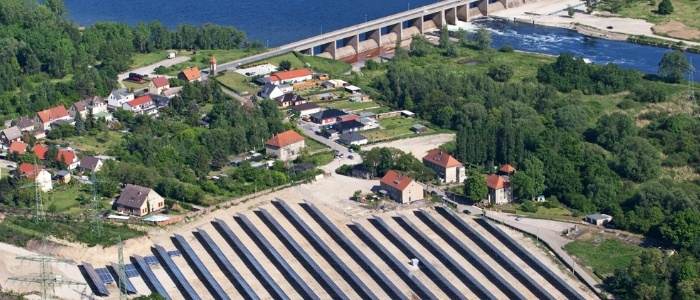With the past September, another month has broken its heat record. The current year is on course to be the warmest since records began. "Just a few weeks before the next world climate conference, this is a clear sign that politicians must step up their climate protection efforts", comments Markus W. Voigt, CEO of the aream Group. "The last brakes on the expansion of renewable energies must be released now."
According to initial calculations by the EU's Copernicus climate service, global temperatures last September were 0.93 degrees above the average for this month in the period 1991 to 2020, making it the warmest September ever recorded and seamlessly following on from the record summer months before it. For the first nine months of the current year, this results in a global average temperature that is about 1.4 degrees above that of the pre-industrial era (1850 to 1900). The causes of the extreme weather were both climate change and the El Nino weather phenomenon, which warms surface waters in the Pacific.
Records were also set in Germany. The German Weather Service (DWD) spoke of enormous meteorological anomalies that caused the summer to continue in September. At 17.2 degrees, the temperature was almost four degrees above that of the 1961 to 1990 reference period. At the same time, the old heat records of 16.9 degrees from 2006 and 2016 were surpassed. "These are extraordinary as well as frightening figures", Voigt says.
Favourable for the producers of solar energy: The sun shone 246 hours in September, exceeding its value from the reference period by 65 percent. This gave the solar plants in Germany a production of 17 percent above the target value - "and that despite repeated curtailment in Bavaria", says Voigt. In Spain, the above-average irradiation was cancelled out by curtailment (about 575 MWh), with production reaching only 81 percent of the target value. In Italy, on the other hand, good production figures were achieved despite lower irradiation (107 percent of the target value).
The wind blew less strongly in September. Nevertheless, wind turbines in Germany achieved a stable production value of 73 percent of the target value. "After six months, generator bearing damage was repaired in mid-September, which had led to a loss of yield of around 3,370 MWh, 170 MWh of which in September", explains Voigt. Nevertheless, the wind turbines were able to achieve their target by almost 97 percent in the first nine months of the current year.
PRESSEKONTAKT:
Leandra Kiebach
T: +49 (0)211 30 20 60 4-2
E: lk@aream.de


